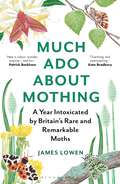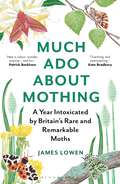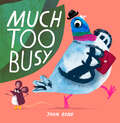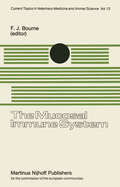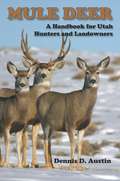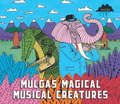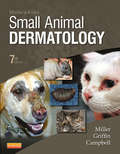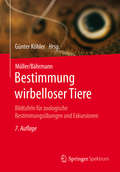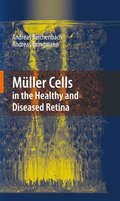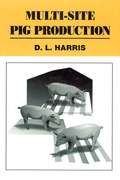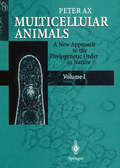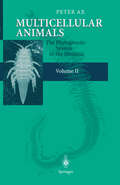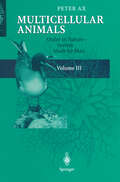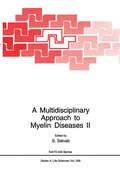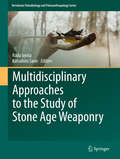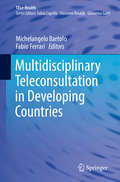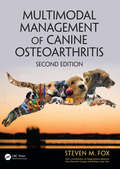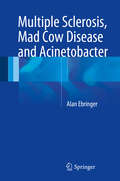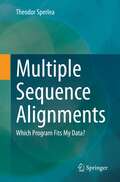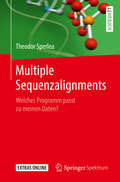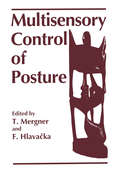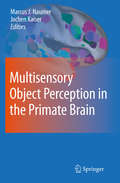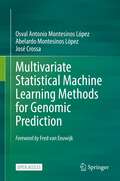- Table View
- List View
Much Ado About Mothing: A year intoxicated by Britain’s rare and remarkable moths
by James LowenAlthough mostly unseen by us, moths are everywhere. And their capacity to delight astounds.Inspired by a revelatory encounter with a Poplar Hawk-moth – a huge, velvety-winged wonder wrapped in silver – James Lowen embarks on a year-long quest to celebrate the joy of Britain's rarest and most remarkable moths. By hiking upmountains, wading through marshes and roaming by night amid ancient woodlands, James follows the trails of both Victorian collectors and present-day conservationists. Seeking to understand why they and many ordinary folk love what the general public purports to hate, his investigations reveal a heady world of criminality and controversy, derring-do and determination.From Cornwall to the Cairngorms, James explores British landscapes to coax these much-maligned creatures out from the cover of darkness and into the light. Moths are revealed to be attractive, astonishing and approachable; capable of migratory feats and camouflage mastery, moths have much to tell us on the state of the nation's wild and not-so-wild habitats.As a counterweight to his travels, James and his young daughter track the seasons through a kaleidoscope of moth species living innocently yet covertly in their suburban garden. Without even leaving home, they bond over a shared joy in the uncommon beauty of common creatures, for perhaps the greatest virtue of moths, we learn, is their accessibility. Moths may be everywhere, but above all, they are here. Quite unexpectedly, no animals may be better placed to inspire the environmentalists of the future.
Much Ado About Mothing: A year intoxicated by Britain’s rare and remarkable moths
by James LowenAlthough mostly unseen by us, moths are everywhere. And their capacity to delight astounds.Inspired by a revelatory encounter with a Poplar Hawk-moth – a huge, velvety-winged wonder wrapped in silver – James Lowen embarks on a year-long quest to celebrate the joy of Britain's rarest and most remarkable moths. By hiking upmountains, wading through marshes and roaming by night amid ancient woodlands, James follows the trails of both Victorian collectors and present-day conservationists. Seeking to understand why they and many ordinary folk love what the general public purports to hate, his investigations reveal a heady world of criminality and controversy, derring-do and determination.From Cornwall to the Cairngorms, James explores British landscapes to coax these much-maligned creatures out from the cover of darkness and into the light. Moths are revealed to be attractive, astonishing and approachable; capable of migratory feats and camouflage mastery, moths have much to tell us on the state of the nation's wild and not-so-wild habitats.As a counterweight to his travels, James and his young daughter track the seasons through a kaleidoscope of moth species living innocently yet covertly in their suburban garden. Without even leaving home, they bond over a shared joy in the uncommon beauty of common creatures, for perhaps the greatest virtue of moths, we learn, is their accessibility. Moths may be everywhere, but above all, they are here. Quite unexpectedly, no animals may be better placed to inspire the environmentalists of the future.
Much Too Busy
by John BondA brilliant new picture book from major talent John Bond, creator of Mini Rabbit.
The Mucosal Immune System: Proceedings of a Seminar in the EEC Programme of Coordination of Agricultural Research on Protection of the Young Animal against Perinatal Diseases, held at the University of Bristol, School of Veterinary Science, Langford, Nr. Bristol, United Kingdom on September 911, 1980 (Current Topics in Veterinary Medicine #12)
by F. J. BourneThis publication contains the proceedings of a Seminar on 'The Mucosal Immune System' held by the Commission of the European Communities (CEC) at the University of Bristol. School of Veterinary Science. Langford. Bristol on September 9th - 11th. 1960. The seminar formed part of the CEC programme of co-ordinated agricultural research on Protection of the Young Animal against Perinatal Disease and was organised by Professor F.J. Bourne and his colleagues Dr. T.J. Newby and Dr. C.R. Stokes. The Proceedings were edited by the organisers assisted by Janssen Services. 33a High Street. Chislehurst. Kent and provide an authoritative and up-to-date account of this rapidly moving research area. Serious economic loss from diseases of mucosal surfaces - particularly the enteric and respiratory tracts - occurs in young farm animals throughout the EEC. Protection against these diseases is based on an understanding of their epidemiology including host defence mechanisms. Mucosal vaccines have in the main given disappointing field results with. however. some notable exceptions. This seminar rationalises methods used to stimulate mucosal immune defence and indicates likely areas for future research and development. The CEC wishes to thank the organisers and the participants who con tributed to the success of the seminar. OPENING SESSION Chairman F.J. Bourne 3 OPENING REMARKS F.J. Bourne On behalf of the University of Bristol and the European Economic Community my colleagues and I welcome you to the Langford Veterinary School.
Mule Deer: A Handbook for Utah Hunters and Landowners
by Dennis D. AustinA complete guide to the history, biology, hunting, and management of mule deer in Utah. The author, Dennis D. Austin, is a retired research scientist with more than thirty years of experience working as a wildlife biologist for the Utah Division of Wildlife Resources.
Mulga's Magical Musical Creatures
by MulgaGuitar-playing fishes? Gorillas on drums? Fluting kangaroos? Join Mulga in his dreamy jungle jam session, where magical animals play sweet tunes from night till day.Mulga's Magical Musical Creatures is a rhyming picture book for children that answers the question where does music come from? It tells the story of a musician who finds musical inspiration in his dreams. While he's sleeping he dreams of banjo-playing owls, jazz-fluting kangaroos, trumpeting elephants and whistling toucans, and when he wakes up he's inspired to write a song.With a style that is entirely and unmistakably Mulga, this fun and colourful story will delight readers of all ages with its fantastically quirky creatures.
Muller and Kirk's Small Animal Dermatology - E-BOOK
by William H. Miller Jr. Craig E. Griffin Karen L. CampbellCovering the diagnosis and treatment of hundreds of dermatologic conditions, Muller and Kirk's Small Animal Dermatology, 7th Edition is today’s leading reference on dermatology for dogs, cats, and pocket pets. Topics include clinical signs, etiology, and pathogenesis of dermatologic conditions including fungal, parasitic, metabolic, nutritional, environmental, and psychogenic. This edition includes full updates of all 21 chapters, and more than 1,300 full-color clinical, microscopic, and histopathologic images. Written by veterinary experts William Miller, Craig Griffin, and Karen Campbell, this resource helps students and clinicians distinguish clinical characteristics and variations of normal and abnormal facilitating accurate diagnosis and effective therapy.Over 1,300 high-quality color images clearly depict the clinical features of hundreds of dermatologic disorders, helping to ensure accurate diagnoses and facilitating effective treatment.Comprehensive coverage includes environmental, nutritional, behavioral, hereditary, and immune-mediated diseases and disorders.Well-organized, thoroughly referenced format makes it easy to access information on skin diseases in dogs, cats, and exotic pets. UPDATES of all 21 chapters include the most current dermatologic information.NEW editors and contributors add new insight and a fresh perspective to this edition.
Müller/Bährmann Bestimmung wirbelloser Tiere: Bildtafeln für zoologische Bestimmungsübungen und Exkursionen
by Lothar JähnichenDieses Buch bietet durch instruktive Strichzeichnungen und erläuternde Kurztexte zu wesentlichen Körpermerkmalen wirbelloser Tiere einen einfachen und sicheren Einstieg in deren Bestimmung.Kurze Einführungen in 20 Tiergruppen (und Gallen) informieren über Körperbau, Lebensweise, Lebensräume, Beobachtungs- und Sammelmöglichkeiten. Einbezogen sind Formen und teils auch deren Larven an Land und im Süßwasser, die sich ohne Spezialkenntnisse bis zur Art, bei schwierigen Taxa auch nur bis zur Gattung oder Familie bestimmen lassen. Anhand der skizzierten Merkmale lassen sich über dichotome oder multiple Entscheidungsschritte über 2700 Arten und Gattungen bestimmen. Das Register erschließt alle in den Bildtafeln genannten, wissenschaftlichen und gebräuchlichen deutschen Namen sowie häufige Synonyme. Das Literaturverzeichnis enthält die wichtigsten weiterführenden Bestimmungswerke zu wirbellosen Tieren und zu den einzelnen Tiergruppen.In der 8. Neuauflage wurden bei einem Drittel aller Bildtafeln etliche Namen aktualisiert, neue Skizzen eingefügt, Bestimmungsgänge verbessert und weitere häufig gewordene invasive Arten aufgenommen. Insgesamt 36 Tafeln wurden völlig neu bearbeitet, neben einer Makrozoobenthos-Übersicht noch Planarien, Zecken (♂♂), Fluss- und Flohkrebse, Libellen, Ohrwürmer, Schaben, Blattläuse (an Laubgehölzen) sowie Netzflügler. Für Studenten und Schüler, Gutachter im Umwelt- und Hygienebereich, Tierfotografen sowie Naturfreunde lässt sich mit diesem praktischen Bestimmungsbuch auf einfache Weise eine große Zahl wirbelloser Tiere sicher einordnen und ansprechen, sowohl unmittelbar in deren Lebensräumen als auch in Fallenfängen und Sammlungen.
Müller/Bährmann Bestimmung wirbelloser Tiere: Bildtafeln für zoologische Bestimmungsübungen und Exkursionen
by Günter KöhlerDie in drei Jahrzehnten erprobten Bestimmungstafeln erfreuen sich aufgrund ihrer instruktiven Strichzeichnungen und der erläuternden Texte eines unverändert regen Zuspruchs.Kurze Einführungen in 20 Tiergruppen (und Gallen) geben Auskunft über Baueigentümlichkeiten, Besonderheiten in der Lebensweise, Beobachtungs- und Sammelmöglichkeiten sowie Hinweise zum Artenschutz. Beschrieben werden terrestrische und limnische Arten bzw. Artengruppen, die sich ohne Spezialkenntnisse bestimmen lassen. Nur bei schwierigen Taxa enden die Bestimmungsgänge oftmals bei Gattungen oder Familien. Anhand der Bildskizzen und meist dichotomer Entscheidungsschritte lassen sich ungefähr 2500 Arten bzw. Gattungen wirbelloser Tiere bestimmen. Das Register erschließt sämtliche in den Bildtafeln genannte wissenschaftliche und deutsche Namen sowie häufig gebrauchte Synonyme. Das Literaturverzeichnis enthält wichtige weiterführende Bestimmungswerke zu den jeweiligen Tiergruppen.In der 7. Neuauflage wurden einige Bestimmungsgänge weiter verbessert, Taxonnamen aktualisiert und häufig gewordene invasive Arten erstmals berücksichtigt. Völlig neu bearbeitet wurden die Bestimmungstafeln für Steinfliegen, Zikaden und Skorpionfliegen.Schüler, Studenten und Naturfreunde können mit Hilfe dieses praktischen Bestimmungsbuches auf einfache Weise eine große Anzahl wirbelloser Tiere sicher ansprechen und diese auch unmittelbar in ihren Lebensräumen kennenlernen.
Müller Cells in the Healthy and Diseased Retina
by Andreas Reichenbach Andreas BringmannMüller cells may be used in the future for novel therapeutic strategies to protect neurons against apoptosis (for example, somatic gene therapy), or to differentiate retinal neurons from Müller/stem cells. Meanwhile, a proper understanding of the gliotic responses of Müller cells in the diseased retina, and of their protective vs. detrimental effects, is essential for the development of efficient therapeutic strategies that use and stimulate the neuron-supportive/-protective - and prevent the destructive - mechanisms of gliosis.
Multi-Site Pig Production
by D. L. HarrisMulti-site Pig Production is the first comprehensive description of the most profound changes that have occurred in swine production methodology in many years. Dr Harris is singularly qualified to write this book because he has played a pivotal role in the development of multi-site rearing techniques that are being applied throughout the world. This book provides final definition for a variety of terms being used to describe swine production methods. A standardised nomenclature facilitates more accurate future interactions between participants in swine production systems that involve multiple sites, buildings, and rooms with different age groups and functions.
Multicellular Animals: A new Approach to the Phylogenetic Order in Nature Volume 1
by Peter AxNo one can ever have secure knowledge about the gods and creatures, and should anyone hit by chance upon the right thing, he will not know it for sure; that is why everything that we believe to be true is "opinion". XENOPHANES around 500 B.C. (According to ROD 1988, p.85) The goal of phylogenetic systematics (cladistics) is to discover the kinship relations between all organisms on earth and to translate the order we perceive in Nature into an equivalent man-made system. Although the goal is easily formulated, the path is thorny, and the results achieved continue to be imperfect. This is the fate of any science that bases its propositions on the interpretation of histor ical evidence. The diversity found in the millions of species originated as a result of the continuous splitting of biopopulations through time. Combined with this was the emergence of hierarchically linked des cent communities of species. We call the process of origin of descent communities phylogenesis. We do not know, however, the exact course of phylogenesis - we can only formulate hypotheses. The historical evidence at hand consists of the feature patterns of extant species and of extinct species with their combination of original and derived traits which are the result of evolution.
Multicellular Animals: Volume II: The Phylogenetic System of the Metazoa
by Peter AxThe system of multicellular animals presented here is an alternative to the traditional classification system. In a new approach to the phylogenetic order, this book strives for an objective systematization of the metazoa, seeking a new path in the field of academic research and teaching.
A Multidisciplinary Approach to Myelin Diseases II (Nato Science Series A: #258)
by S. SalvatiThe diseases that fall under the generalized group of demyelinating diseases -Multiple Sclerosis, Leukodystrophyes, Encephalomyelitis-are the focus of worldwide concern. This volume contains papers presented by leading scientists who attended the NATO Advanced Research Workshop held at the Istituto Superiore di SanitA, Rome, March 1-4, 1993. This book is an update of the previous one published in 1987 of the research discussed at a similar meeting held in 1986. It was decided to hold this 2nd meeting since there has been great progress in the advances in understanding the myelinogenesis process in the last five years. The workshop gathered together scientists from many fields such as cellular and molecular biology, immunology, pathology, virology and of course clinical neurology. Stimulating ideas were exchanged in the hope that more knowledge of demyelinating diseases can lead to new theraupetic approaches. Although the workshop was on the whole similar to the previous one, this time there was more emphasis on experimental models and clinical aspects. In the former the use of animal and cellular models as tools for understanding the pathological mechanisms linked to human disease were discussed; in the latter the clinicians described the filtering down of basic research to clinical treatment The publication of this interdisciplinary exchange is to make known the results of the most recent research among the investigators from allover the world involved in these studies.
Multidisciplinary Approaches to the Study of Stone Age Weaponry (Vertebrate Paleobiology and Paleoanthropology)
by Radu Iovita Katsuhiro SanoThe objective of this volume is to showcase the contemporary state of research on recognizing and evaluating the performance of stone age weapons from a variety of viewpoints, including investigating their cognitive and evolutionary significance. New archaeological finds and experimental studies have helped to bring this subject back to the forefront of human origins research. In the last few years, investigations have expanded beyond examining the tools themselves to include studies of damage caused by projectile weapons on animal and hominin bones and skeletal asymmetries in ancient hominin populations. Only recently has there been a growing interest in controlled and replicative experiments. Through this book readers will be updated in the state of knowledge through a multidisciplinary scientific reconstruction of prehistoric weapon use and its implications.Contributions from expert authors are organized into three themed parts: recognizing weapon use (experimental and archaeological studies of impact traces), performance of weapon systems (factors influencing penetration depth etc.), and behavioral and evolutionary ramifications (cognitive and ecological effects of using different weapons).
Multidisciplinary Teleconsultation in Developing Countries (TELe-Health)
by Michelangelo Bartolo Fabio FerrariThis book presents a replicable model of multidisciplinary teleconsultation, designed and set up by Global Health Telemedicine, that offers very significant health benefits in remote and rural areas of developing countries. The model is based on experiences gained in sub-Saharan Africa while training and cooperating with local health professionals within the DREAM program, managed by the Community of Sant’Egidio. This program has to date treated almost 300,000 patients across many countries and has provided health education and disease prevention training to tens of millions. It originated in the context of the fight against AIDS but has been extended to encompass other pathologies and to exploit the capabilities of new telemedicine technologies that allow multispecialist teleconsultation (hence the acronym now represents “Disease Relief through Excellent and Advanced Means”). In addition to thorough description of the program, readers will find reflections and analysis on logistical, technical, sociological, and epidemiological issues. The book is divided into thematic chapters with easy-to-understand graphics. It will be a readily accessible source of information for professionals in international cooperation and global health students and professionals.
Multimodal Management of Canine Osteoarthritis
by Steven M. FoxMultimodal Management of Canine Osteoarthritis, Second Edition takes an evidence-based approach to the canine patient with osteoarthritis, pursuing the objective of the best available medicine by a variety of means: multiple drugs, agents, adjuncts and delivery methods. Appreciating that surgical intervention may initially be required, particularly for stabilizing a joint, the major focus in this work is the conservative management of osteoarthritis. A clear and visual approach is taken with the overlapping of two three-pointed triangles of management: medical and non-medical. The completely updated new edition offers a major new chapter on Regenerative Medicine in collaboration with Drs Sherman Canapp and Brittany Jean Carr. It is recommended for any small animal veterinary practitioner, as well as researchers and students of the RCVS CertAVP.
Multimodal Management of Canine Osteoarthritis (Manson Ser.)
by Steven M. FoxMultimodal Management of Canine Osteoarthritis, Second Edition takes an evidence-based approach to the canine patient with osteoarthritis, pursuing the objective of the best available medicine by a variety of means: multiple drugs, agents, adjuncts and delivery methods. Appreciating that surgical intervention may initially be required, particularly for stabilizing a joint, the major focus in this work is the conservative management of osteoarthritis. A clear and visual approach is taken with the overlapping of two three-pointed triangles of management: medical and non-medical. The completely updated new edition offers a major new chapter on Regenerative Medicine in collaboration with Drs Sherman Canapp and Brittany Jean Carr. It is recommended for any small animal veterinary practitioner, as well as researchers and students of the RCVS CertAVP.
Multiple Sclerosis, Mad Cow Disease and Acinetobacter
by Alan EbringerThe aim of this book is to publicise and bring to a wider audience the concept that the cause of two neurological diseases, namely multiple sclerosis (MS) and “mad cow disease” also known as “bovine spongiform encephalopathy” are related through exposure to a common microbe Acinetobacter which is found in human sinuses, on skin and in the soil. An infection is the cause of a neurological disease in man and in animals. Elevated levels of antibodies to Acinetobacter have been found in multiple sclerosis patients as well as in ruminants who have been described as suffering from “mad cow disease” following exposure to contaminated feed supplements. The overall objective and scope of this book is to inform the audience, the reader, that multiple sclerosis may be linked to a microbe Acinetobacter which carries molecular structures resembling myelin, the outer sheath covering of neurons.
Multiple Sequence Alignments: Which Program Fits My Data?
by Theodor SperleaThis book is a practical guide for biologists who use multiple sequence alignments (MSAs) for their data analysis and are looking for a comprehensive overview of the many different programs. Despite their important role in data analysis, there is uncertainty among researchers about exactly how MSA programs work - not to mention how and why the different analyzes lead to different results. Which program is the right one for evaluating my data and how can I ensure that I have drawn all relevant findings from the alignments? This book offers helpful explanations and background information without requiring extensive bioinformatics knowledge and slowly introduces the reader to the topic.In the first part of the book, the possible fields of application as well as the formats that are usually produced by MSA programs are described in detail. The central algorithms as well as the internal processes of the most common MSA programs of the past and the present are also explained in an uncomplicated manner in greater detail. The second part of the book is a detailed, data-based comparison between MSA programs, which is intended to help you decide which program to use for your next alignment.
Multiple Sequenzalignments: Welches Programm passt zu meinen Daten?
by Theodor SperleaDieses Buch ist ein praktischer Ratgeber für Biologinnen und Biologen, die Multiple Sequenzalignments (MSAs) für ihre Datenanalysen verwenden und einen verständlichen Überblick über die vielen verschiedenen Programme suchen. Trotz ihres wichtigen Stellenwertes in der Datenanalyse herrscht Unsicherheit unter den Forschenden wie MSA-Programme genau funktionieren - ganz zu schweigen davon, wie und warum die unterschiedlichen Analysen zu verschiedenen Ergebnissen führen. Welches Programm ist für die Auswertung meiner Daten das richtige und wie kann ich sicherstellen, alle relevanten Erkenntnisse aus den Alignments gezogen zu haben? Dieses Buch bietet hilfreiche Erklärungen und Hintergründe ohne große bioinformatische Vorkenntnisse vorauszusetzen und führt die Leserinnen und Leser langsam in die Thematik ein.Im ersten Teil des Buches werden die möglichen Einsatzfelder wie auch die Formate, die üblicherweise von MSA-Programmen produziert werden, im Detail beschrieben. Ebenso werden auf unkomplizierte Weise die zentralen Algorithmen sowie die inneren Abläufe der gängigsten MSA-Programme der Vergangenheit und der Gegenwart in größerer Detailtiefe erklärt. Den zweiten Teil des Buches bildet ein ausführlicher datenbasierter Vergleich zwischen MSA-Programmen, der als Entscheidungshilfe für die Programmauswahl für dein nächstes Alignment dienen soll.
Multisensory Control of Posture
by T. Mergner and F. HlavačkaFrom recent developments in the rapidly growing area of neuroscience it has become increasingly clear that a simplistic description of brain function as a broad collection of simple input-output relations is quite inadequate. Introspection already tells us that our motor behavior is guided by a complex interplay between many inputs from the outside world and from our internal "milieu," internal models of ourselves and the outside world, memory content, directed attention, volition, and so forth. Also, our motor activity normally involves more than a circumscribed group of muscles, even if we intend to move only one effector organ. For example, a reaching movement or a reorientation of a sensory organ almost invariably requires a pattern of preparatory or assisting activities in other parts of the body, like the ones that maintain the body's equilibrium. The present volume is a summary of the papers presented at the symposium "Sensory Interaction in Posture and Movement Control" that was held at Smolenice Castle near Bratislava, Slovakia, as a Satellite Symposium to the ENA Meeting 1994 in Vienna. The focus of this meeting was not only restricted to the "classical" sensory interactions such as between vestibular and visual signals, or between otolith and semicircular canal inputs. Rather, the symposium tried to consider also the interplay between perception and action, between reflexive and volitional motor acts as well as between sensory driven or self-initi ated motor acts and reafferent inputs.
Multisensory Object Perception in the Primate Brain
by Jochen J. Kaiser Marcus Johannes NaumerIt should come as no surprise to those interested in sensory processes that its research history is among the longest and richest of the many systematic efforts to understand how our bodies function. The continuing obsession with sensory systems is as much a re?ection of the fundamental need to understand how we experience the physical world as it is to understand how we become who we are based on those very experiences. The senses function as both portal and teacher, and their individual and collective properties have fascinated scientists and philosophers for millennia. In this context, the attention directed toward specifying their properties on a sense-by-sense basis that dominated sensory research in the 20th century seems a prelude to our current preoccupation with how they function in concert. Nevertheless, it was the concentrated effort on the operational principles of in- vidual senses that provided the depth of understanding necessary to inform current efforts to reveal how they act cooperatively. We know that the information provided by any individual sensory modality is not always veridical, but is subject to a myriad of modality-speci?c distortions. Thus, the brain’s ability to compare across the senses and to integrate the information they provide is not only a way to examine the accuracy of any individual sensory channel but also a way to enhance the collective information they make available to the brain.
Multivariate Statistical Machine Learning Methods for Genomic Prediction
by José Crossa Osval Antonio Montesinos López Abelardo Montesinos LópezThis book is open access under a CC BY 4.0 licenseThis open access book brings together the latest genome base prediction models currently being used by statisticians, breeders and data scientists. It provides an accessible way to understand the theory behind each statistical learning tool, the required pre-processing, the basics of model building, how to train statistical learning methods, the basic R scripts needed to implement each statistical learning tool, and the output of each tool. To do so, for each tool the book provides background theory, some elements of the R statistical software for its implementation, the conceptual underpinnings, and at least two illustrative examples with data from real-world genomic selection experiments. Lastly, worked-out examples help readers check their own comprehension.The book will greatly appeal to readers in plant (and animal) breeding, geneticists and statisticians, as it provides in a very accessible way the necessary theory, the appropriate R code, and illustrative examples for a complete understanding of each statistical learning tool. In addition, it weighs the advantages and disadvantages of each tool.
